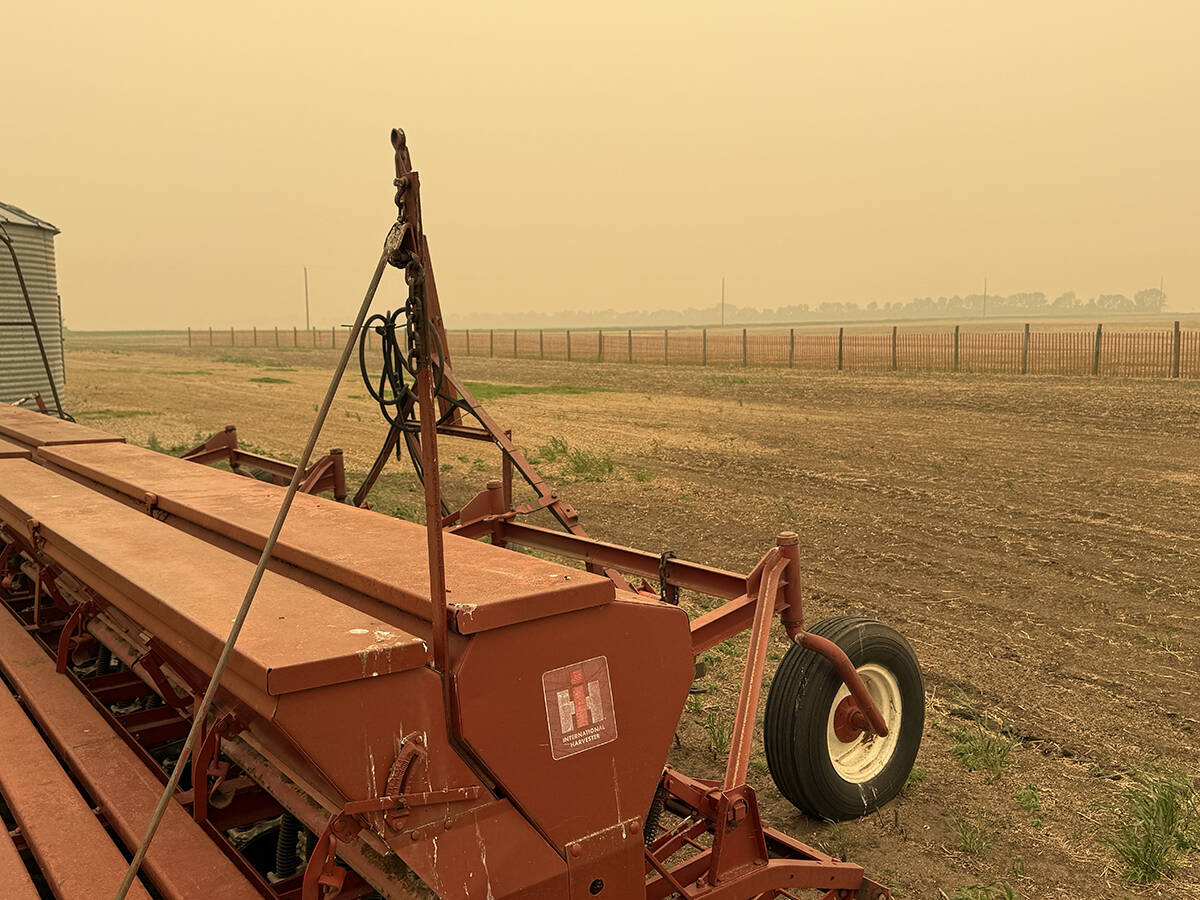The Alberta government plans to launch the province’s first school of veterinary medicine with a focus on diseases that can spread from animals to humans.
With about 30 graduates a year, the three-year course, beginning in 2006, is expected to help reduce the shortage of large animal veterinarians in rural areas, said Daniel Joffe, president-elect of the Alberta Veterinary Medical Association.
In 2003, the association did a survey in Western Canada that showed rural veterinarians were in short supply.
“The results of that survey suggest we are not graduating enough veterinarians and certainly not enough veterinarians with specialized skills to meet the demands of Western Canada today or into the future.”
Read Also

Wildfires have unexpected upside this year
One farmer feels smoke from nearby wildfires shrouded the July skies and protected his crop from the sun’s burning rays, resulting in more seeds per pod and more pods per plant.
To help meet those needs, the association as well as the Alberta Beef Producers and other organizations will sit on a steering committee to guide and develop the curriculum for the program, which will be at the University of Calgary and linked with the faculty of medicine.
With 40 percent of the cattle herd and 70 percent of the packing capacity in the country, Alberta has a huge stake in ensuring a healthy animal population, said learning minister Lyle Oberg, when he announced the program.
“It’s an absolutely vital industry for our province.”
The school will cost $8.5-$12 million to operate. The government will still provide $5.4 million to support the Western College of Veterinary Medicine in Saskatoon, the only veterinary program in Western Canada. It accepts 20 Albertans each year.
Oberg said the school would provide unique research into the detection, containment and eradication of diseases that can spread from various species to affect humans. About 80 percent of the infectious diseases in humans originate in animals.
“It’s very likely the next pandemic will start in the animal population,” said Oberg, who added that veterinarians need the tools to help deal with diseases like BSE.
The Canadian livestock industry has lost billions of dollars with the discovery of a single cow in northern Alberta with BSE. Governments across the country have spent close to $1 billion helping to prop up the industry until the American border reopens or the cattle industry reorganizes itself.
“If we could have had the research capability and the infrastructure in place to deal with this, there’s the potential that those billions of dollars may not have had to be spent,” Oberg said. “We have to prepare veterinary medical practitioners and researchers to focus on the food supply safety.”
Arno Doerksen, chair of the Alberta Beef Producers, welcomed the news.
“This is a good day for the Alberta beef industry. This is positive. There is a need for additional large animal practitioners in Western Canada, he said.
“The last 15 months have proved to cattle producers the importance of a better understanding of further research and a more comprehensive communication with interrelation with human health and beef.”














